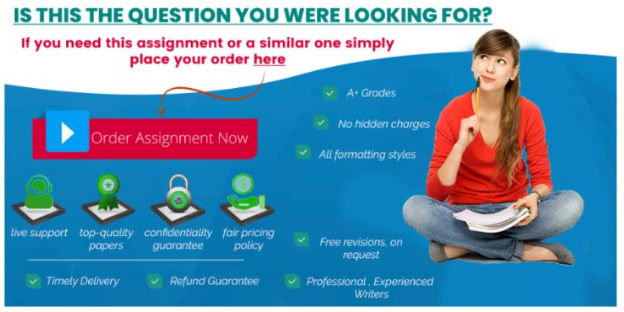Understanding Human Origins
Biological anthropologists are often called upon to educate the public regarding human biological and cultural diversity from a culturally relativist perspective. Whether the biological anthropologist is employed as a cultural resource manager, business consultant, or teacher, knowledge of how human diversity came about and what it means in terms of modern life gives them a better understanding of human actions and interactions.
For the summative assessment, you will step into the role of a biological anthropologist asked to provide recommendations for a museum exhibit centered on the origin and development of human beings. You will provide specific recommendations to illustrate basic elements of biological anthropology such as human evolution, variability, and adaptability, justifying your recommendations. Finally, you will assess the ethical implications of these recommendations and the relationship to cultural relativism.
The project is divided into three milestones, which will be submitted at various points throughout the course to scaffold learning and ensure quality final submissions. These milestones will be submitted in Modules Two, Four, and Five. The final product will be submitted in Module Seven.
In this assignment, you will demonstrate your mastery of the following course outcomes: Understanding Human Origins
· Analyze human culture and environment for their impact on diversity in human evolution
· Illustrate the value of a cultural relativist perspective for ethically conducting biological anthropological research
· Deconstruct contemporary societal assumptions about diversity with respect to race using biological anthropological theoretical perspectives
· Analyze major fossils to determine their relationship to human evolution and variability
· Analyze the impact of primate anatomical evolution on extinct and modern primate behaviors using evidence-based examples
Prompt
Your museum exhibit recommendations memorandum should answer the following prompt. You will step into the role of a biological anthropologist who has been asked to consult on a museum exhibit geared toward younger patrons, specifically high school students. The museum exhibit is entitled “Understanding Humans: How Did We Get Here?” As the biological anthropologist, you have been asked to provide recommendations on how to teach the basic elements of biological anthropology such as human evolution, variability, and adaptability to the specified audience. To do so, you will select the key fossils, specimens, and artifacts that best convey these ideas. You will select fossils previously covered in the course. In addition to the display items, you will provide justification for their procurement to the funding organization, an important aspect of almost any career in anthropology. The funder will also need assurances that the ethical implications for procuring and displaying specimens and artifacts will be taken into consideration since they, in turn, must answer to donors.

Specifically, the following critical elements must be addressed:
I. Impact of Primate Evolution: In this section, the museum would like visitors to learn about the impact of primate evolution on modern behaviors.
A. Identify prominent examples that illustrate major trends in nonhuman primate anatomical evolution and provide a detailed explanation as to why you recommend the museum exhibit these primates. How do your chosen species demonstrate the major events of primate anatomical evolution?
B. Analyze the anatomy of your chosen primate species and discuss the relationship between anatomical evolution and modern primate behaviors. What connections can you see between the primate anatomy and modern primate behaviors?
C. Identify examples from the fossil record that illustrate evidence of the evolutionary split between apes and monkeys and, later, between apes and humans. How do these examples illustrate the major differences between apes, monkeys, and humans today? What are the behaviors of these extinct species?
D. What ethical considerations are involved in deciding what information or items to display? For example, would it be better to use captive live animals to demonstrate primate behavior versus videos of primates in their natural habitat? Why? Are there any ethical considerations related to how the museum might obtain primate anatomical specimens or replicas?
II. Hominin Evolution: In this section, you will identify prominent fossils and illustrate their relationship to evolution and variability.
A. Identify prominent hominin fossils that represent the trajectory of human evolution across time and geographic space, justifying your recommendations. To provide a sufficient representation, you will need to recommend multiple fossils.
B. Analyze the fossils you recommended for their value in understanding human biological evolution, substantiating your analysis with research. In other words, what insight do these extinct species provide us when trying to understand human evolution? How do these species represent some of the major trends in human evolution?
C. Analyze the fossils you recommended for their value in understanding human biological variation, substantiating your analysis with research. In other words, how does variation within these fossil species reflect the type of biological variation we see in modern humans? Think about things like stature, body shape, body size, and skin color—all of which vary wildly in our species. Do we see similar patterns in your chosen fossils or not?
D. Explain how the museum staff can ethically obtain and display these fossils. Consider questions such as these in your response: Where will they get the fossils? Will compensation be necessary? Can they use the real fossil, or would a cast replica be preferable? Are there any downsides to using a replica? What considerations are involved in deciding how to protect and display the specimen?
III. Impact of Culture and Environment: In this section, the museum has asked how it might explain the impact of culture and the environment.
A. Explain the biological aspects of a particular disease with respect to how it is connected to diversity in human genetics.
B. Analyze why certain cultures have higher rates of your chosen disease than others, substantiating your explanation with research.
C. Analyze how the environment (local climate, temperature, average rainfall, common infectious diseases) has impacted the diversity in human genetics related to the specific disease, substantiating your explanation with research. In other words, why might rates of your chosen disease be higher in populations that have adapted to certain conditions?
D. Explain the ethical implications that may arise if the museum uses the specific disease in the exhibit, and how cultural relativism can be used to mitigate these implications.
IV. Deconstructing Race: In this section, the museum wants visitors to learn about race from an anthropological stance.
A. Explain what anthropologists mean when they say that race is a social construct. Understanding Human Origins
B. Identify modern-day examples the museum could use in their display to illustrate how race is socially and culturally constructed.
C. Describe the difference between race and ethnicity. Why do biological anthropologists use ethnicity to describe groups of people but not race?
D. Identify examples from human genetics and biological anthropology that the museum could incorporate that will help reinforce the idea that race is a social construct rather than a biological reality.
E. Explain the relationship between biological anthropological views of race and cultural relativism. Why is it important that a biological anthropologist employ a cultural relativist perspective when studying the concept of race in different cultures?
Your museum exhibit recommendations memorandum should be 8 to 12 pages in length (plus a cover page and references). Use double spacing, 12-point Times New Roman font, and one-inch margins and follow the most current APA guidelines.
What examples show primate evolution, Which hominin fossils illustrate evolution and variability, How do culture and environment affect diversity, How is race socially constructed, Why is cultural relativism important in anthropology










